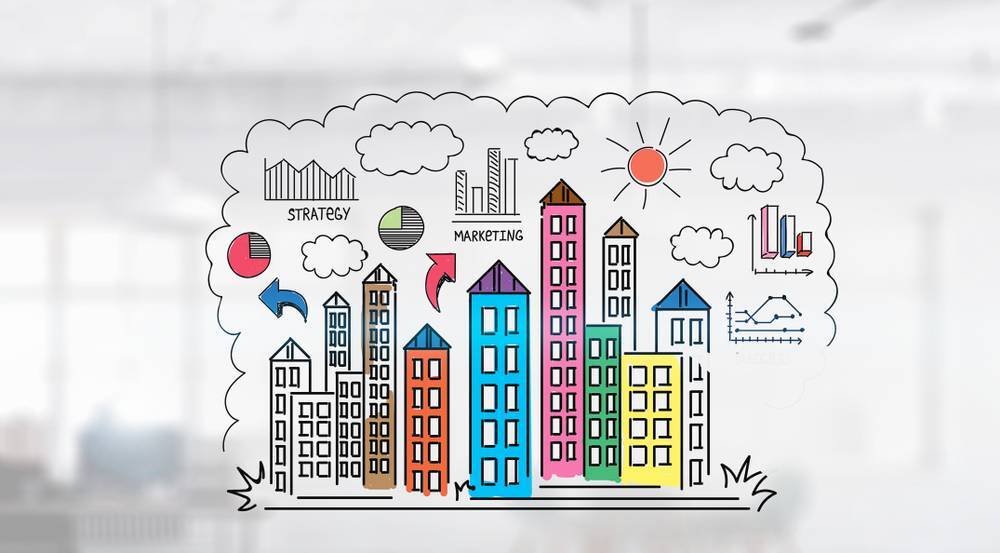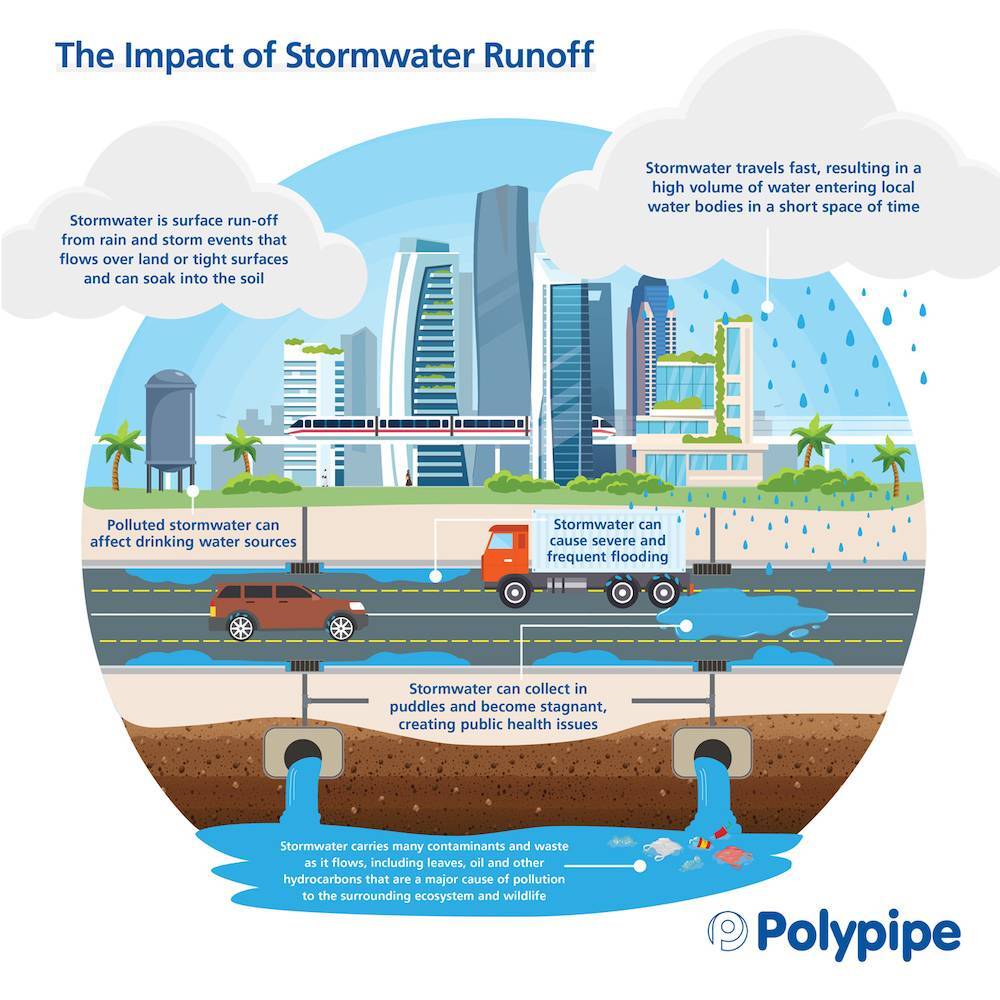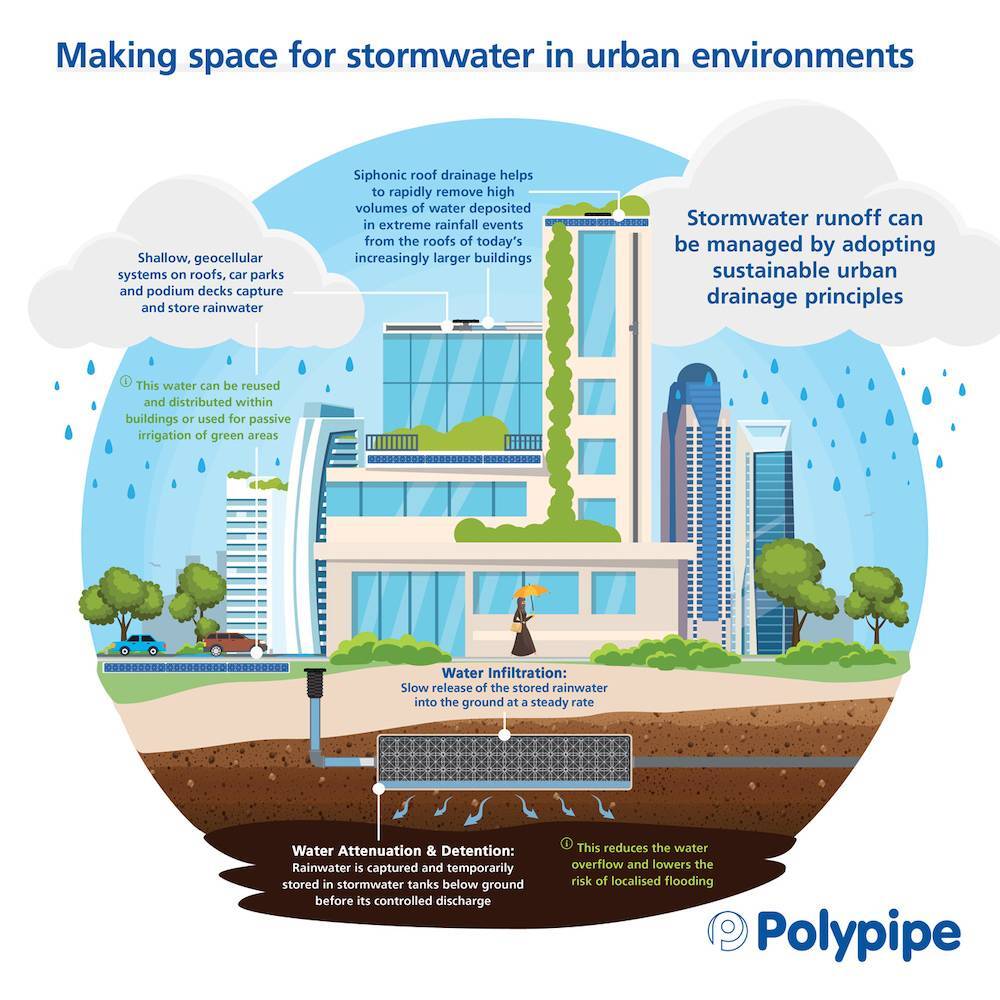Smart water technologies for urban environments – Driving the blue-green revolution
Sunday 10th February 2019

How does a rapidly growing metropolis create resilience to changing rainfall patterns? Rising cities need a sustainable solution to deliver resilience to extreme rainfall events and manage high levels of groundwater in an increasing urban area.
In general, there are two fates for falling stormwater. Within a natural landscape, stormwater runs-off into ponds and filtrates naturally into the soil. The needed water is accessible to plants and animals and replenishes reserves of surface and groundwater. In contrast, in an urban landscape, stormwater falls onto impermeable surfaces (surfaces that do not absorb water) such as city streets, pavements, rooftops or parking lots and is not soaked up by the ground. The falling water is swept across these surfaces converting huge amounts of rainwater directly into run-off.

Stormwater run-off plays a large role in local water pollution. It travels fast, resulting in a high volume of water entering local water bodies in a short pace of time. It picks up waste and pollutants as it flows and carries them into local waterways, such as rivers, lakes, and streams, before eventually making its way into the ocean. This causes major pollutions to the surrounding ecosystem and wildlife. In a natural system, a variety of plants act as filters that clean pollution from the water as it infiltrates into the soil. Without these natural filters, pollutants and other contaminants accumulate and are washed into bodies of water.

Rapid urbanisation, climate change, limited network capacity, or no accessible network, has led to new government / municipality regulations and legislation across the Middle East to find an alternative approach to stormwater management and flood mitigation. This requirement is underpinned further by sustainable codes. Local Authority dictates, whereby a more considered approach to managing water in the built environment and embraces international design principles. One of the key options for managing storm / surface water run-off is known as “Source Control” which minimises run-off rates and volumes transferred from properties to local infrastructure networks.
Implementing innovative sustainable urban drainage solutions (SuDS) including roof garden and podium landscaping, creates the opportunity to harness and re-use naturally occurring water, using landscaped areas to prevent flooding by holding water naturally, filtering out sediment and slowing down its progress to reduce stress on the drainage system. These green ‘oases’ can also build resilience and have a cooling effect on the urban environment, reducing the Heat Island Effect while helping communities better prepare for extreme weather events, such as droughts or floods.
Usually, when heavy rain and storms occur, people naturally think of the water as a burden. However, in order to manage stormwater effectively, it must be embraced and seen as a natural capital, a concept that encompasses all our natural resources including air, soil, living things and the eco system on which we depend.
Integrating stormwater management throughout a neighbourhood – through the use of green roofs, rainwater harvesting, infiltration systems and so on – in combination with engineered geocellular solutions, allows communities to simultaneously manage stormwater for both, every day and extreme events. Urban communities must be designed to live in balance with the local climate and environment, whether quite wet or very dry.
Practical, reliable solutions and expertise from Polypipe
Clever water management systems, such as Polypipe’s geocellular Permavoid system, can take storm/surface or condensate water from buildings and use it passively in the system to irrigate surrounding areas, whilst Polypipe’s Polystorm soakaways and attenuation tanks help collect stormwater run-off at source for filtration or re-use, removing the need for traditional long drainage networks. The Terrain HydroMax siphonic drainage system is designed to rapidly remove the high volumes of water deposited in extreme rainfall events from the roof and offers a complete and proven solution.
Having operated in the Middle East for over 50 years, Polypipe has built a solid reputation for helping contractors and developers find practical solutions to achieve seemingly impossible development visions.
Polypipe is well-versed in regional practices, requirements and regulations, as well as helping property developers identify innovative sustainable water management solutions to meet their regulatory and sustainability obligations whilst maximising profitability.
Contact us today to discuss the transformative solutions for your project:
Tel: +971 (0) 4 518 3000
Email: middleeast@polypipe.com
